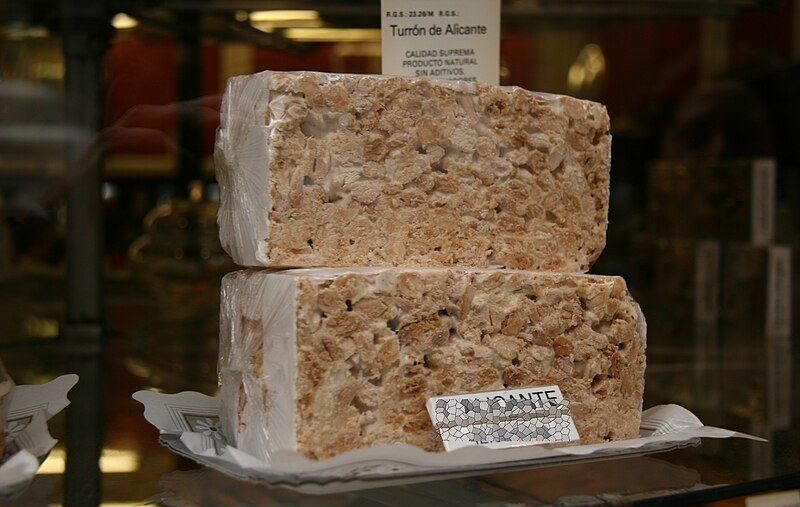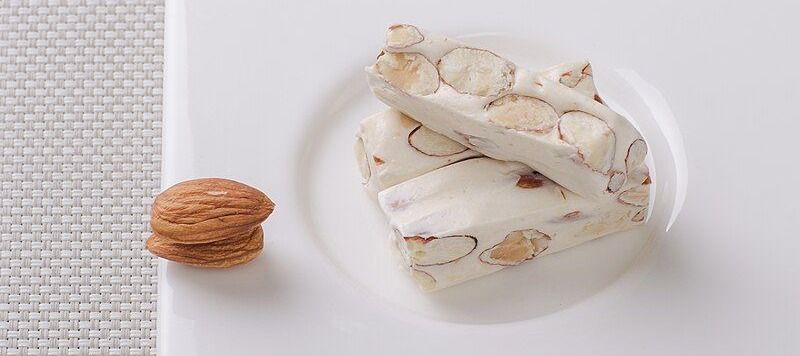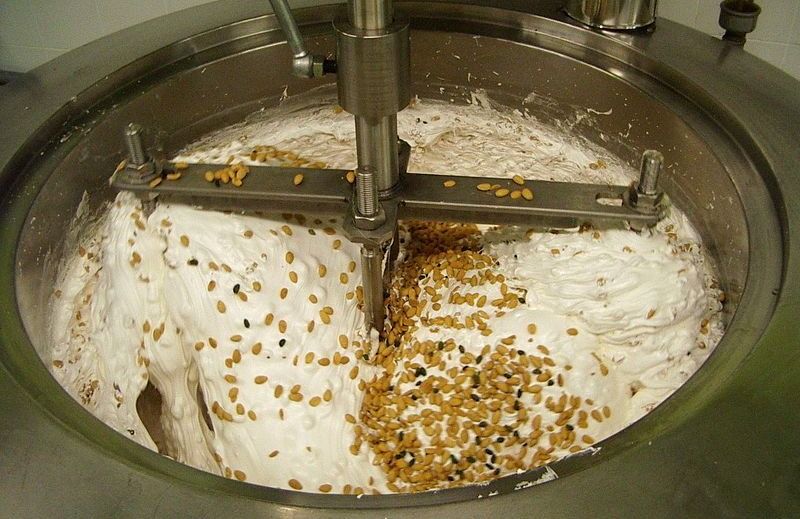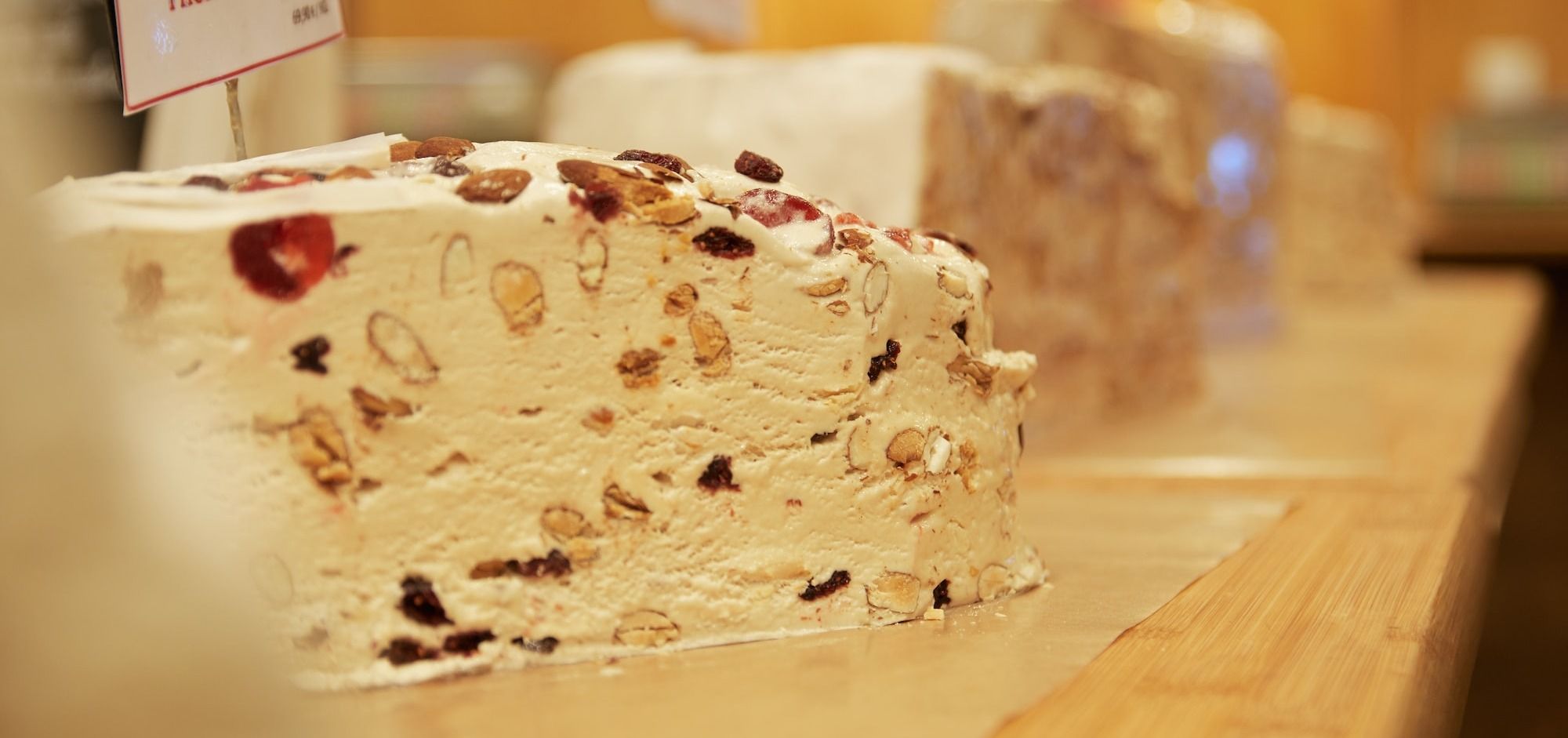Spain's Premium Turrón: Unveiled
During the holidays in Spain, turrón aisles are a standout feature in stores. It's clear the Spanish adore this treat. So, what exactly is turrón? And why is it such a Christmas favorite?

A beloved Christmas dessert in Spain, Turron or known as nougat mainly comes in two forms: the hard Alicante variant and the soft Jijona style. Both originate from Spain's Valencia region and have inspired diverse flavor evolutions over time.
What is Turron?
Turron is a Spanish confectionery delicacy that bears similarities to nougat, crafted using honey, sugar, eggs, and roasted nuts. While almonds are the traditional choice, variants with nuts like pistachios are also popular. The preparation involves caramelizing honey, integrating sugar and egg whites, followed by the inclusion of the roasted nuts. Once combined, the mixture is allowed to settle and harden.
Across different countries, this delectable treat goes by various names. While it's known as "Turrón" in Spain, in Italy it's called "torrone." Essentially, it's a southwestern European nougat confection, and while the core ingredients remain consistent, regional variations and names reflect the rich diversity of European culinary traditions.

History of Turrón
Derived from the Latin "torrere" meaning "to toast," the term "turrón" traces its roots to when the Arabian Moors ruled much of Spain. These Moors, celebrated for their culinary richness, introduced key ingredients like sugar cane and almonds to Spanish food culture. Using ground almonds, they developed a marzipan-like paste, the early version of turrón.
Nougat's presence in Spain can be credited to these Arabs. By the 11th century, its consumption was already widespread. Originally known as "turum" in Arabic, the recipe has largely remained unchanged. As the Moors ventured across Europe, they spread the love for this delicacy, finding notable fans in countries like France and Italy. Yet, Spain's affinity for turrón remained unmatched, marking it as a treasured piece of its culinary heritage.
The Heart of Turrón: Jijona
Jijona, also referred to as Xixona in Valenciana, is a quaint town located roughly 25 miles from Alicante, visible from Alicante's Santa Barbara castle. For centuries, its primary economic driver has been the production of turrón.
Central to turrón creation are its ingredients. The Marcona almond, distinct for being rounder and sweeter (albeit with a harder shell) than its counterparts, stands out as the preferred choice.
Historically rooted in Spain, these almonds benefit from the surrounding wildflowers and blossoms of Jijona's mountainous terrains, which also contribute to the region's fine honey. This unique blend of locally-sourced almonds and honey positions Jijona as the ideal birthplace for this celebrated Spanish delicacy.

The Turron Varieties in Spain
Alicante's Signature Nougat: Hailing from Alicante, a distinctive nougat has emerged, characterized by its blend of gently toasted whole almonds and honey. The area boasts a Regulatory Council dedicated to maintaining the integrity of this sweet treat's Denomination of Origin. This means they work diligently to ensure each nougat – whether it's Alicante or its kin, Jijona – meets precise standards to be recognized under the Protected Geographical Indication.
This Alicante specialty is often dubbed "hard nougat" due to its notable texture, achieved by using uncrushed almonds. To be labelled under this category, the nougat must contain a minimum of 46% almonds in its composition.
Jijona's Soft Nougat: Distinct from its Alicante counterpart, Jijona's nougat carries its own Denomination of Origin and is affectionately termed the "soft nougat."
The difference lies in its preparation: the almonds are finely ground rather than left whole. This process, wherein the crushed almonds meld seamlessly with caramel, culminates in a smooth, chunk-free nougat that's delightfully soft to the bite.

Understanding the Premium Price of Spanish Turrón
- Ingredients of the Highest Quality: The primary ingredients in Turrón are almonds and honey. The almonds, particularly the Marcona variety, are regarded as some of the finest in the world. These almonds are not only tasty but also expensive due to their cultivation methods and the limited geographic regions where they grow optimally. Pure honey, another critical ingredient, can also be costly, especially when sourced locally and sustainably.
- Protected Geographical Indication (PGI): Protected Geographical Indication (PGI) is a seal of authenticity, signifying that a product's key phase of creation is rooted in a specific region. Turrón de Alicante and Turrón de Jijona are prime examples, both originating from Jijona in Alicante, Spain. These nougats consist of at least 10% local honey and select almonds from regional varieties such as Valenciana and Marcona. With almond content as a differentiator, the 66% variety is termed “Supreme” and the 46% as “Extra.” Notably, Jijona contributes a whopping 60% of Spain's total nougat production, emphasizing its global appeal.
- Traditional Artisanal Methods: While many sweets around the world have moved to mechanized production, much of Turrón's production remains artisanal. The time-honored techniques demand skill, patience, and a personal touch, ensuring each piece's quality and authenticity but also increasing labor costs.
- Packaging and Presentation: High-quality Turrón brands often invest in premium packaging to complement the luxury product within. Elegant boxes, detailed labels, and protective layers to maintain freshness all add to the cost.
- Cultural and Historical Significance: Turrón isn't just a sweet treat. It's a part of Spanish heritage, carrying centuries of history and tradition. Products with such deep cultural roots often command a premium, as they offer an experience, not just a taste.
Which Variety Is The Most Expensive?
The 1880 brand of turron stands out, touting itself as the world's priciest nougat. This iconic treat has been an integral part of Christmas celebrations for many years, with the legendary Jijón 1880 variant being particularly renowned. Despite its longstanding presence in holiday traditions, many might not ponder why it claims the title of the world's most expensive nougat.
How Much Does 1880 Turrón Cost?
The tradition of savoring turrón during festive seasons is likely tied to its premium pricing, making it a treat reserved for special moments. Especially noteworthy is the turrón from Jijona, touted as the 'world's priciest.' Its Christmas edition fetches a staggering $268 for half a kilogram, while on typical days, it's priced around $50.


